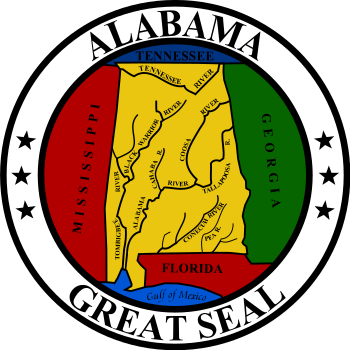In the midst ... was there the tree of life ... and the leaves of the tree were for the healing of the nations. - Revelation 22: 2
John the Apostle had been banished to the island of Patmos for preaching the Christian gospel message, and there he had a vision wherein he saw what heaven looked like. The full text of Revelation 22: 2 reads:
“In the midst of the street of it, and on either side of the river, was there the tree of life, which bare twelve manner of fruits, and yielded her fruit every month: and the leaves of the tree were for the healing of the nations.”
Wouldn’t it be wonderful if all tree leaves could be used for the healing of nations? What would the earth’s landscape be like were it not for trees? Can you imagine?
No need to imagine. It would be like Saturn, Jupiter, Mars or any of the other planets. But this glorious blue and green planet earth is adorned by these tall (some small) woody plants; from magnificent forests that grow naturally to individual trees planted by proud parents to honor the arrival of a new family member.
Some tree leaves have proven to have medicinal applications. But even if they don’t heal all the nations. Trees supply creature comforts in so many ways. Trees bear delicious edible fruits. Trees have branches with foliage that provide shade from a scorching sun. When they sway in a gentle breeze it can create a feeling of calm and inner peace. Some trees have gorgeous flowers. Their blossoms are a treat to the senses of sight and smell, as they are an incredibly amazing range of petal shapes and colors, and give off a variety of pleasant fragrances.
Like most American children, from a Judaeo-Christian background, I was taught the biblical account of creation as recorded in Genesis. I have always thought, based on the account, that in the beginning, mankind was supposed to be vegetarian.
Because the scripture says:
“And God said, Behold, I have given you every herb bearing seed, which is upon the face of all the earth, and every tree, in the which is the fruit of a tree yielding seed; to you it shall be for meat.” (Gen 1: 29).
To take my thought process a step further, the animals were also supposed to be vegetarian (next verse) and to my mind that would certainly make the world a better place. Watching programs on channels like Animal Planet about predatory animals that kill other animals for food, and occasionally enjoy a meal of human flesh, create a very unnerving feeling for me.
But, the purpose of this article is not to try to persuade meat-eaters to convert to a vegan diet. This article is about trees. Because I believe the biblical account of creation and the vivid imagery of John’s vision, the scriptural references are used simply to point out that trees have been an integral part of our existence since the creation; and will continue to be a part of our lives in the afterlife. That being said, the Bible mentions close to one hundred plants (bushes, shrubs and trees).
Below are short descriptions of just a few trees of Biblical importance. This article reflects composite research, i.e. information gathered from both secular and religious sources.
Acacia:
There are the acacias of Egypt and Arabia; and then there is the acacia tree, native of North America, which was introduced into Europe. Research indicates that there are 500 species of the acacia tree. In the United States, it is valued as a timber tree and used in shipbuilding. The Europeans found similar uses. Most students of the Bible know that acacia wood was used to build the Ark of the Covenant.
The acacia trees were large thorny trees. Their orange-brown hard-grained wood repelled insects. In some biblical translations, acacia trees are called shittim. Acacia wood was also used in the building of the first tabernacle (a portable "tent of meeting" where the Jews worshiped during the Exodus).
Almond:
The almond tree is a stunning pinkish-white-flowered tree and it is prized for the high protein nut that it yields. (Some say fruit; some say nut.) Not only are the nuts delicious to eat, but the oil extracted from the nut can be used medicinally or as a lubricant, in cosmetics, pharmaceuticals and as food flavoring. Because the almond contains very little starch, it is recommended as a flour substitute for diabetics.
Almond trees grow in various parts of the world but it thrives in Syria. Ayurveda is a form of alternative medicine in Western society, but a system of traditional medicine native to India. According to ayurvedic prescription, almonds serve as an aphrodisiac and aids in the production of semen and reproductive fluids. Men are encouraged to consume almonds after ejaculation. There are sweet almonds and bitter almonds. Both are good for you! Aaron was the brother of Moses, who helped his brother lead the children of Israel at the time of the Exodus from Egypt and he served as high priest to the Jews.
Among the contents of the Ark of the Covenant was Aaron’s rod. According to the Old Testament scriptures, though this rod had miraculous power, it was nothing more than an almond branch or twig. Per Numbers 17: 8, the rod “brought forth buds, bloomed blossoms and yielded almonds”.
Balsam:
“There is a balm in Gilead to make the wounded whole” are words from a Christian hymn. [Note 1] The balsam tree was indeed very valuable in biblical times.
The International Standard Bible Encyclopedia states: “It was an ingredient in the anointing oil of the priests (Ex 25:6; 35:28).
The Queen of Sheba brought it as a present to Solomon (1 Ki 10:2) in large quantity (1 Ki 10:10) and of a finer quality (2 Ch 9:9) than that brought as a regular tribute by other visitors (1 Ki 10:25).” [Note 2]
From the balsam tree, one can produce balm, an aromatic resinous gum used for medical purposes. Balm of Gilead, balsam of Gilead, and balsam tree are common names. It has even been called balsam of Mecca. In Genesis, the well-known story is told of Joseph who was sold into slavery by his jealous and envious brothers to a passing caravan of Ishmaelites. The Ishmaelites were traders on their way to Egypt to trade slaves, spices, myrrh and balm from Gilead.
Balsam is very difficult to cultivate, so it is only rarely grown. Usually it is cultivated in the regions bordering the Red Sea. Ancient Egyptians, Romans, Greeks, Arabs and Turks all treasured the balm of Gilead. The Greek term balsamon means ‘fragrant oil’.
Sycamore:
People often make a distinction between the sycamore of scripture and the sycamore tree of Eurasia and North America. The “true sycamore” (as some refer to it) is the tree that Zacchaeus, the tax collector, climbed up into in order to see Jesus. He was a man of small stature and could not see Jesus because of the crowd, so he climbed up into a tree to get a better view. Luke 19: 1 – 10 presents the detailed account.
The biblical sycamore tree grew in Palestine and in Egypt. It bore small yellow edible fruit which was clustered and resembled a fig. The prophet Amos gathered the fruit of this tree for a living. Egyptian mummy-coffins are made out of this durable wood. The thick-branched wide-spreading tree has heart-shaped leaves with a downy underside which are very fragrant.
But, just because the sycamore trees of Eurasia and North America have no biblical significance, it doesn’t mean they aren’t just as delightful. The sycamore of Eurasia is a deciduous maple tree which has greenish flowers, winged fruits, and palmately lobed leaves (i.e. the leaves have five or more lobes arising from a single point and spread like fingers from a hand). The sycamore of North America is valued for its timber; but is also widely planted as a shade tree.
Fascinating Fact:
“The Tree of Life in Bahrain is one of the mysteries of world which is bound to be in the list of most unusual trees around the globe! This four-century-old mesquite tree survives in the midst of desert without the availability of water. The mystery of the survival of the tree has made it a legend and the name 'tree of life' is absolutely appropriate for the tree, truly representing the magic of life. A legend is also attached to the site where the tree is located. The local inhabitants believe with heart and soul that this was the actual location of the Garden of Eden.” [Note 3]
Tree Sitting
Tree sitting is when a protester sits in a tree, to protect it from being cut down. It is an act of civil disobedience that sometimes results in forcible removal of the protestor from the tree. Zacchaeus was not a tree-sitter. This article only briefly touches upon an arbitrary selection of a few trees mentioned in the Bible, and one legend created around a Bible story.
The famed cedars of Lebanon were not included because by the sixth century A.D., most of the beautiful groves had been destroyed and these days only a precious few remain. But hopefully this subjective medley, in a roundabout way, made it apparent that trees don’t just provide creature comforts and they’re not just the stuff of bible stories and legends.
Trees are of critical importance to our environment.
The urgency of preserving, maintaining and cultivating trees can not be overstated or simplified. So heed the words of environmental activists and don’t be so quick to have them hauled off by hired tree-sit extractors. All the trees on our planet are “trees of life” and they can all contribute to healing the world.
******
Notes:
[1] "Oremus Hymnal: There Is a Balm in Gilead." Oremus. Web. 25 Sept. 2011.
[2] "Bible History Online - International Standard Bible Encyclopedia." Bible History Online Images and Resources for Biblical History. Web. 24 Sept. 2011.
[3] "10 Strangest Trees on Earth" ZuZuTop. 19 Jan. 2010. Web. 24 Sept. 2011.
Primary References:
Scriptural references can be easily researched online at Bible Gateway.
Youngblood, Ronald F., F. F. Bruce, and R. K. Harrison. Nelson's New Illustrated Bible Dictionary. Nashville: T. Nelson, 1995.
"Trees - All about Palm Trees, Oak Tree, Pine Tree, Fruit Tree, Maple Tree and More!" 20-20 Site | Trees - All about Palm Trees, Oak Tree, Pine Tree, Fruit Tree, Maple Tree and More! LoveToKnow Corp. Web. 24 Sept. 2011.
Recommended Read:
Chapot, Hank. "Tree-Sitting, Since 1930." The Berkeley Daily Planet. 26 June 2008. Web. 25 Sept. 2011.
♦♦♦
Blog Publisher's Note: This is my original content which first appeared at Suite101 (later Suite.io), Jan 2013. The site is no longer online and my articles becames unpublished. Various excerpts of this article can be found elsewhere around the web.It was a long and diligent search but I finally located a backup copy of my complete articles. I have republished it here at this blog because the content is still relevant TODAY. Trees are important to sustain life on planet earth!! That fact will never change.
















